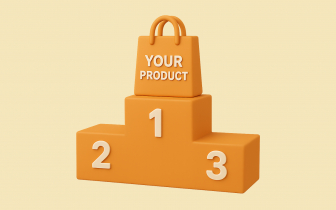Metrics That Matter: Measuring Content Marketing Success on Social Media

Marketing strategies without the right marketing metrics can hinder your marketing efforts. Today, social media marketing is the need of the hour for every brand looking to connect with its audience, build loyalty, and drive sales.
With over 63.9% of the world’s population active on platforms like Instagram, Facebook, LinkedIn, X (formerly Twitter), and TikTok, social media has become a strategic tool to increase brand awareness, foster engagement, and deliver tangible business results.
Content marketing on social media offers immense reach and potential for success. However, without real-time analytics to guide your strategy, you risk stalling your efforts and limiting your marketing impact in the fast-paced digital world.
By measuring the right social media metrics, you can understand which content resonates with your audience, how to optimize it, and ultimately maximize ROI.
In this article, we’ll explore the key metrics crucial for content marketing success on social media and how to use them to fuel smarter, results-driven campaigns.
Source: WordStream
Why are traditional metrics not enough?
Successful marketing strategies go beyond basic benchmarks. As we move through 2025, marketing measures demand more than superficial numbers. Traditional metrics like website traffic and impressions fail to capture the full story of your content's impact.
Marketing success today isn’t about reaching the target audience; it’s also about engagement, conversions, and ROI.
Let’s say your post reaches 100,000 people and leaves an impression. That’s impressive, isn’t it? But what happens next? You're left without insight into the valuable actions taken by users:
- Did users stop scrolling to read?
- Did they comment, share, or click through?
- Did your content drive traffic to your website?
- Did they convert into a lead?
- Did your content set a trend?
Content marketing on social media is much more nuanced. If you shape your strategy around tracking only what’s easy to measure, you miss valuable insights into how users engage with your content and the long-term effects of your brand efforts.
In the algorithm-driven, ever-evolving social world, it's crucial to measure success using actionable metrics that reflect real audience connection and strategic outcomes, rather than just vanity numbers.
In fact, 50% of marketers plan to increase their investment in content marketing, understanding the importance of building lasting customer relationships and driving brand value.
Vanity metrics vs. Actionable social media metrics
Vanity metrics are surface-level metrics that may look impressive but fail to reflect your real campaign success. For example, a client's ad post that is liked by 50,000 people may boast high visibility, but if it drives zero conversions, that’s a disappointing reality.
While social media vanity metrics have their place—they can help in building initial visibility – relying on them alone can be misleading and insufficient for making critical marketing decisions.
In today's data-driven digital landscape, you can't afford to base your social media marketing strategies on vague, feel-good numbers. No client wants an ROI report filled with vanity metrics that lack substantial outcomes.
Misleading numerical fluff can waste your marketing efforts.
Vanity metrics not only inflate the overall marketing picture but also create unrealistic expectations for clients.
In contrast, actionable social media metrics provide tangible, predictable results that align with your marketing objectives and measurable outcomes.
Pro tip: Not all social media stats are equal. For a social media metric to be meaningful, it must connect with your client’s strategic goals, such as KPIs, conversions, and customer lifetime value.
Any social media metric can become a “vanity” metric if it is presented without context. Ultimately, what truly matters hinges on your specific goals within social media marketing and your client’s business objectives.
Examples of vanity and actionable social media metrics:
|
Social media vanity metrics |
Social media actionable metrics |
|
Likes |
Number of shares |
|
Shares |
Engagement rate |
|
Story views |
Audience growth rate |
|
Post reach |
Number of brand mentions |
|
Page views |
Conversion rate (e.g., content-to-lead submission forms) |
Why is ignoring deeper insights risky?
Social media is ever-evolving with new trends, viral reels, and engaging features every day. And when 54% of users browse social pages to shop, ignoring deeper insights means you’re willingly leaving serious revenue on the table.
Vanity metrics, at first glance, look incredible and give a quick ego boost, but they are a pitfall leading to missed opportunities, wasted budget, inconsistent messaging, and weak brand image. With incomplete, confusing, superficial data, you lose the potential to build your brand with actionable strategies.
Source: Captions
Here’s why meaningful insights matter for content marketing success on social media:
- To understand the customer’s pain points
- To identify customer behavior and preferences
- To personalize your messaging
- To build strong, long-term, loyal customer relationships
- To improve your SEO performance
- To drive engagement and boost conversion rate
- To identify trends early
- To avoid content decay and stay relevant
- To strengthen brand visibility and awareness
Deeper insights help you convert your target audience with strategic, goal-driven SEO and marketing tactics in this digital era.
Metrics that truly reflect your content marketing success
As you know, not all social media metrics are equally important for measuring marketing success. However, certain metrics are essential for understanding how your content performs across various platforms.
Analyzing social media insights is critical for creating and refining impactful content strategies that grow your brand.
Analyzing metrics can help you:
- Evaluate the performance of your existing social media content
- Identify which content type best holds the attention span of your target audience
- Measure how well your content marketing efforts are contributing to your client’s business goals
The right metrics to track can vary from business to business. Your social media analytics and reporting template should be tailored to specific business objectives, campaign strategies, and overall digital marketing goals. Whether you’re tracking awareness, engagement, or conversions, every data point you communicate with your clients should help narrate the story of your efforts.
Ultimately, every insight you share with your client should answer two questions:
- What did you do?
- What results did it drive?
Your client reports shouldn't just present numbers; they should demonstrate the value of your content marketing success.
Key content marketing metrics to track and measure in social media
Tracking content marketing performance is essential in today’s competitive digital landscape. With the right metrics, you can drive strategic success for every piece of content you publish.
Understanding what works and what doesn't enables you to shape future social media content that better meets your audience’s needs. This data-driven approach helps you measure performance, make informed decisions, refine strategies, optimize ongoing efforts, and achieve your ROI goals.
Here are the social media metrics to measure your content marketing success:
- Follower’s growth: This metric tracks your social media followers over time. A steady increase in your audience indicates that your content attracts and retains the right viewers.
- Engagement rate: This measures the level of interaction, such as likes, shares, saves, and comments your content receives relative to your followers. A higher engagement rate suggests that you provide quality content that resonates with your audience.
- Reach: This metric helps you understand your audience scope by indicating to you how many unique users have come across your content. It reflects the overall visibility and exposure of your social media posts.
- Brand mention: This tracks how often your brand is mentioned online, whether tagged directly or referenced organically. It’s a strong sign of how well your content has succeeded in building brand awareness.
Engagement and interaction metrics: beyond likes and comments
Likes and comments aren’t vanity metrics, but engagement and interaction metrics have more to them. While these visible numbers of engagement just scratch the surface of your audience's interaction, true engagement dives deeper.
It discusses the quality of interactions and conveys your audience’s intent and relationship with your brand.
Source: Hootsuite
Here are a few engagement and interaction metrics that go beyond the basics:
1. Saves: Users save your content when they find it valuable enough to revisit. This indicates the relevance of your content.
2. Shares and reposts: When audiences share or repost your content to their feed or story, it shows how resonant your content is to be passed along. Basically, they are not just engaging with your post; they’re amplifying your message.
3. Direct messages (DMs): Direct conversations with your users often carry more intent. Whether it's a product inquiry, feedback, or a follow-up, DMs are a powerful sign of trust, loyalty, and deeper interest.
4. Click-through rate (CTR): CTR shows how many people clicked on your call to action—a link in your bio, a product page, or a sign-up form. A higher CTR indicates that your content is compelling enough to drive action.
5. Story interactions: Micro-interactions like polls, quizzes, link taps, and emoji sliders in stories reveal real-time audience engagement. These give you immediate insight into what content sparks curiosity.
6. Comment quality: Not all comments are valuable. Are people asking questions, tagging others, or starting discussions under your content post? Rich, thoughtful comments not only drive visibility but also initiate meaningful conversation.
Conversion & ROI: direct impact on business goals
Engagement is a great start, but conversion is the real success of your content marketing on social media. Whether generating leads or closing sales, your content should directly support business outcomes.
Here’s how to measure that content marketing impact:
1. Conversion rate: Tracks how many users completed an action (like filling a form or making a purchase) after engaging with your content.
2. Cost per conversion (CPC): Shows how your content drives results by measuring the cost of acquiring each lead or customer.
3. Revenue from social: Reveals how much revenue your social content generates. It’s useful for tracking ROI on ad campaigns or paid content.
4. Click-to-conversion time: Measures how quickly users take action after clicking your content. The shorter the time, the stronger the CTA.
5. Lead quality: Focuses on the value of leads driven by content – are they qualified and moving through your sales funnel?
Leveraging metrics for continuous improvement
Social media is ever-evolving, and your marketing strategies shouldn’t fall behind trends or algorithm shifts. The way to stay ahead? Monitor key metrics and act on the insights they reveal.
These numbers help you craft content that genuinely connects with your audience. With real-time analytics, you're not just guessing—you’re continuously optimizing your campaigns and driving toward ROI goals.
For example, if video or audio content performs well with your audience, using tools like an AI voice generator can streamline production, allowing you to quickly adapt messaging based on what the data shows.
To see real results on social media, your strategies can’t stay stagnant—they need to evolve with the data, flowing with fresh insights at every step.
How to build your own metric framework
Every brand has its own set of metrics to track, but many remain confused about what to track in the abundance of data. The key to measuring what really counts?
Let your content goals lead the way. A custom metric framework ensures you're tracking what aligns with your strategy and long-term goals, not just what looks good on paper.
Here’s how to build your own metric framework:
1. Define your content goals: Begin with clarity. Are you aiming to boost brand awareness, generate leads, improve engagement, or drive conversions? Your goals are the foundation of your metric strategy.
2. Map goals to metrics: Once goals are set, align them with specific, measurable metrics. For example:
- Brand awareness - Reach, Impressions, Mentions
- Engagement - Saves, Shares, Comments
- Conversions - Form fills, Sign-ups, Sales
This ensures every number you track has a clear purpose.
3. Choose tools wisely: Use reliable tools that aggregate your data in one place, such as Google Analytics, native platform insights, or a third-party automated reporting tool, to automate and simplify tracking.
4. Set benchmarks: Establish realistic benchmarks based on past performance or industry standards. This helps you measure progress and spot underperformance early.
5. Review regularly: Set a regular schedule (weekly, monthly) to review your metrics, identify trends, and refine your strategy accordingly.
When your metrics framework is tied to your actual goals, reporting becomes more meaningful, and your content marketing gets sharper with every iteration.
3 Lessons from leading brands (Case studies)
Want to know what content marketing success on social media looks like? Let’s break down three real-world brand wins that show how metrics, strategy, and storytelling create impact and inspire action.
1. Nike – Drive emotional engagement
Nike’s “Dream Crazy” campaign wasn’t just about shoes—it was about sparking a movement. Nike tapped into deep emotional storytelling by placing bold messaging and partnering with athletes like Colin Kaepernick.
The brand leaned into Instagram, knowing it’s where their younger target audience lives and breathes content.
Source: Urban Hydration
What worked?
- Strong alignment between the message and the audience
- Visual storytelling tailored to platform behavior
- Strategic hashtag use to boost reach and engagement
Lesson: Content that connects emotionally drives deeper engagement and lasting brand loyalty.
2. Airbnb – Lead with purpose
Airbnb’s “#WeAccept” campaign is a powerful example of content marketing on social media executed with intention. Launched during a global conversation around inclusion, it featured emotional storytelling and inclusive visuals across Facebook and Instagram to promote the message: “Airbnb accepts all kinds of people.”
Source: Threezi
What worked:
- Timely, values-driven message
- Emotionally resonant visuals and copy
- Strong hashtag engagement that invited user stories
Lesson: Use your social media content to tell stories that reflect your brand values. When you lead purposefully, you don’t just gain reach—you build trust and loyalty.
3. Wendy’s – Sassy, sharp & always on-brand
Wendy’s Twitter (now X) account is legendary for its witty comebacks, bold personality, and relentless roast game, which is especially aimed at fans and competitors.
From calling out McDonald’s for its “missing beef” to proudly stating “Never frozen beef” in response to a follower’s question, Wendy’s keeps its tone punchy and fun, driving massive engagement.
What worked:
- A unique brand voice that’s sharp, consistent, and memorable
- Real-time fan interaction that encourages virality
- Fearless, competitor-aware content strategy
Lesson: You don’t need to be savage, but you do need to be authentic. When your content voice reflects your brand personality and speaks your audience’s language, you stand out in the scroll.
Conclusion
In today’s content-saturated world, social media success isn’t about posting frequently but measuring intentionally.
The right metrics guide your content strategy, helping you move beyond guesswork to real, data-driven impact. From growing your audience and increasing engagement to generating leads and conversions, every number you track should have a clear, strategic purpose.
Great content deserves more than just attention—it deserves measurable outcomes. With the right insights, you’re already on the path to smarter, more successful campaigns.



